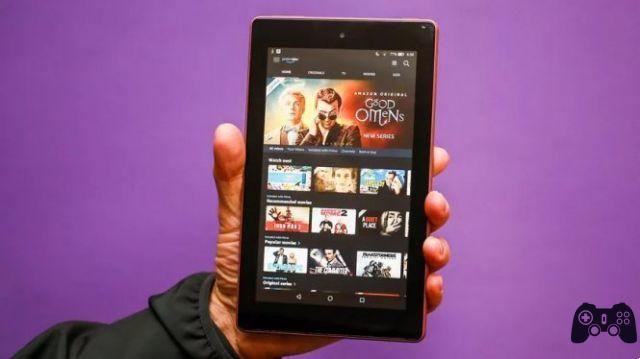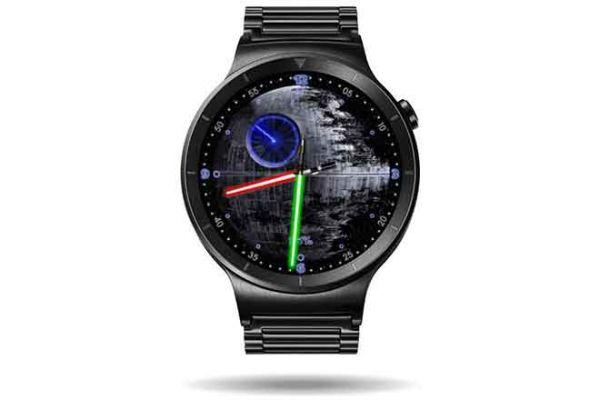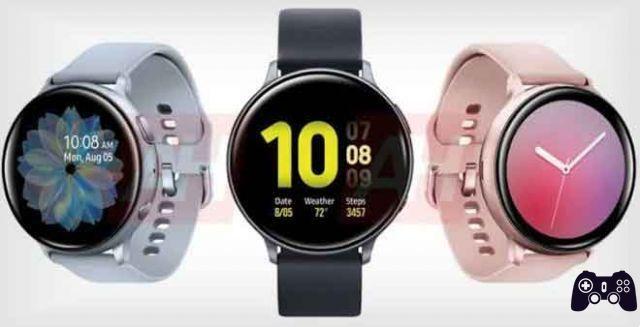
Amazon has come a long way since it started as an online bookstore in the 90s. Having expanded beyond books at the turn of the century, Amazon's continued growth has made it one of the largest markets in the world, and today the company is known for everything from food to clothing to film or music. Although Amazon's line of gadgets began with the Kindle eReader in the mid-2000s, it has since expanded to smart speakers, tablets, set-top boxes, HDMI cables, and even custom smartphones.
Amazon is basically a one stop shop for everything you need in your life and that includes some new tech products. While their Fire tablets may not be the most powerful devices on the market today, they perform well in media consumption, internet browsing and, of course, shopping.
If you've recently managed to buy one of Amazon's three Fire devices, you'll likely enjoy watching some of your favorite Netflix or Amazon shows around the house or on a long drive. The two larger devices both have dual-stereo speakers that make watching movies or TV shows a real joy.
Of course, crowding around a 10 ″ tablet isn't the best experience when you're trying to watch The Big Sicks on Amazon Prime, and that's where tablet mirroring comes in.
If you're looking to stream a movie from your tablet to your TV, or if you want to view the entire tablet interface in your living room, let's take a look at how to stream your tablet directly to your TV.
TWO TYPES OF MIRRORING
The Fire tablet runs Fire OS, an Android-based and largely functioning operating system similar to what we've come to expect from Android. This means that your tablet is packed with many of the features of Android, simply customized to properly fit into Amazon's own ecosystem.
On a standard Android device, you typically have the option to cast your content to a Chromecast-enabled device, along with several other devices depending on the app you're using. Netflix and YouTube, for example, can both stream directly to Roku or Smart TV apps, despite not having been created directly for Cast.
Unfortunately, Amazon doesn't support Google's Cast standard - Chromecasts aren't sold on the Amazon website, the Amazon Prime Video app doesn't allow streaming to Chromecast, and the software on the Fire TV doesn't have any standard Cast support built in.
That said, Amazon has developed its own form of screen mirroring. The company offers two distinct versions of display mirroring on its devices:
- Second Screen: Similar to the Cast standard, the second screen allows you to transfer content to a Fire TV or Fire Stick device. Some apps, including Netflix, also allow you to transfer your content directly to non-Amazon devices, but to watch videos directly through Amazon you will need to have a Fire TV or Fire Stick as a streaming device.
- Display Mirroring: Unlike the second screen, Display Mirroring allows you to stream anything displayed on your device, from your Facebook feed to a recipe displayed on your device. Essentially, this turns your TV into a wireless computer monitor controlled via your tablet. Unfortunately, there are several limitations to proper display mirroring, including a lack of support on newer devices. We will talk more about this in the Requirements and Limitations section.
What is it for you? Well, it depends on both your device and your use case. Most tablet owners will likely use the Second Screen options on their devices, although if you own an older tablet, you may be able to mirror the device to the screen.
WHICH DEVICES CAN YOU STREAM ON?
Of course, Amazon pushes its users to live in their ecosystem. Between integrating Alexa on their new line of tablets, being able to sync your stuff in their Kindle eBooks between devices, and the savings you can earn by signing up for renewable products instead of opting for one-time payment, it goes without saying that Amazon appreciates. keeping its customers within a single brand.
For this reason, the only device you can directly mirror the display to is the Fire TV or Fire Stick, purchased directly from Amazon for $ 79,99 for the former and $ 39,99 for the latter.
Without this device, you won't be able to mirror your tablet, stream video via Amazon Instant Video or Amazon Prime Video, or transfer your music to your smart TV, unless your TV is running Fire OS (you can find the list of those TVs here;
That said, there are a fair share of devices that some apps can share their content through, depending on the app you're using for streaming. Netflix, as mentioned, is the big one.
Viewing the app downloaded from Amazon's Appstore made it clear that we could stream our videos to our Fire TV, our Roku Express, a Vizio smart TV, and more.
Netflix does its best to make itself available on all platforms in the world and it's clear that they also work to make sure their apps work with as many devices as possible. YouTube, on the other hand, didn't seem to want to work with any of our devices, including the Fire TV.
The YouTube app on the Amazon Appstore is clearly a portal to the mobile website and not the official app, so needless to say, it was a bit surprising.
There is a workaround available to install the official YouTube app on the tablet via Google Play and that app allowed us to stream on one of the platforms mentioned above (as long as there was a YouTube app on the device, we were able to the stream).
Basically, the amount of devices you can stream the video to seems to completely depend on the platform you're using.
For example, while Netflix and the Play Store YouTube app worked with our devices during testing, the Amazon Appstore version of Hulu offered no way to easily stream our content to our Fire TV device or any other set-top. box we had, for that matter.
Likewise, the Play Store version of Hulu also doesn't offer us these selections, despite the fact that the regular Android version of Hulu allows streaming to certain devices with the Cast interface.
What you can and cannot stream to your smart devices seems to depend on the platform you are using and the app developer implementing the ability to stream content over the web.
DEVICE REQUIREMENTS AND LIMITATIONS
Not all Fire tablets are created equal, so not all Fire tablets can properly mirror content to your device. Even with Fire TV, content mirroring is not guaranteed.
In fact, no XNUMXth Gen Fire device can properly mirror the display on a TV, which makes it difficult to buy a device currently on sale that can properly mirror the tablet's display on a Fire TV or Fire Stick device from Amazon. Amazon's tablet support page states that display mirroring is limited to a certain subsection of devices:
- Kindle Fire HDX 7 ″ (3rd generation)
- Kindle Fire HDX 8.9 ″ (3rd generation)
- Amazon Fire HDX 8.9 (4th Generation)
- Amazon Fire HD 8 (5th Generation)
- Amazon Fire HD 10 (5th Generation)
As mentioned above, the current generation of devices for sale, including the Fire 7, Fire HD 8, and Fire HD 10, cannot directly mirror their displays to any device, Amazon or otherwise.
This is a pretty big hole in their range of features, especially if you're looking to cast content within the Silk web browser or another application where you may not have the ability to send content from your device.
That said, you can use the device to transfer content from your tablet to your Fire TV or Fire Stick, even on those newer devices. So with the limitations and devices out of the way, let's take a look at all the ways to stream and mirror your content.
HOW TO STREAM CONTENT ON TV
So, if you are ready to start streaming content to your TV, we recommend that you take your tablet and make sure you have an internet ready device. If you want to get the most out of your tablet, we recommend purchasing a Fire TV or Fire Stick device; they're cheap and small enough that adding it to your existing technology should be pretty straightforward. For this example, we'll mainly look at how to stream content to an OS Fire branded device.
USING THE SECOND SCREEN OR THE BROADCAST EXPERIENCE
Whether you own an older tablet or one of Amazon's newer models, you'll be happy to know that streaming your favorite Amazon videos to Fire TV or Fire Stick is easy to do.
You'll need to grab your Fire tablet, make sure the Fire TV device is on and active, and unlike a Chromecast, make sure both devices are linked to the same Amazon account. If both of your devices aren't linked to the same Amazon account, you won't be able to get it to work.
Go to the home screen on your device and scroll down the menu until you reach the Videos tab, then select "Store". This will upload your rented, purchased, and Prime compatible movies (assuming, of course, you are a Prime Subscriber) which can be automatically streamed from your device.
Select any title on your device and you will see typical options for watching your movie. Your device will list both the “Watch Now” option, which will play the movie or TV show on your tablet, and the “Download” option which stores the movie for offline viewing.
Between both of these options, you will see an icon that says “Watch on Fire TV / Fire TV Stick”, depending on the device you have connected to the TV.
If you're not using Fire TV and don't have the same account linked to both devices, you won't see this option. Unlike Airplay or Chromecast, Amazon's second screen requires you to share an account between both devices.
When you tap this option, the tablet will load a Second Screen interface that provides more information about the movie. You can scroll through the cast, jump to scenes like a DVD, view trivia about the scene, and more. You can also turn off the screen on the tablet once the video starts playing.
As mentioned above, some apps, including the Netflix app and the YouTube app available in the Google Play Store with sideloaded, have the ability to stream not just to the Fire TV, but to any device with their apps installed. This is done using the same settings we've seen from Chromecast-compatible apps.
Load the application and select the Cast icon in the upper right corner of the display. A menu for selecting the streaming device will appear in the corner of the app, and you can use the device to select a specific playback device, such as a smart TV or Roku player. This is app-by-app based and entirely depends on who developed the app you are using.
DEVICE MIRRORING
If your device matches one of the device models mentioned above, mirroring the device to your TV can be done quickly and system-wide. If you're not sure if your device matches the model list above, you'll need to dive into your tablet's settings and select “Display”.
Look for the “Display Mirroring” option in the settings menu. If you see this option, congratulations - you can use device mirroring. Just select the option, make sure your Fire TV or Fire Stick is turned on and enabled, and select Fire TV from the list of devices that appears on the display.
Amazon says it may take up to 20 seconds for your device image to appear on your display, but once that's done, you'll be able to directly view the image on your tablet from your TV.
Of course, anyone who has retired a Fire tablet since 2017 will not be able to access this option, as it has been removed from the last few generations of devices. We have a bit of a workaround for this, although it requires an external application that may be well known to any Android user.
AllCast, which has an app on both the Play Store and the Amazon Appstore. Upon opening the app, you will be able to see a list of players that you can use on your network. In our tests, Allcast managed to pick up both Roku devices on the network, as well as the Fire Stick also connected to the device.
Using the app is dependent on the Allcast app being installed on the device as well, although some players (including Roku) can use AllCast without having a separate installation.
There are some notes for AllCast. First, you shouldn't expect AllCast to mirror your device directly. Instead, AllCast will allow you to stream photos, videos, music and more directly to your player, instead of just being able to mirror your display.
Most users who wish to mirror their tablet will do so to view content such as personal photos or videos, and in that sense, AllCast does the same. Second, the device on the receiving end and the Fire tablet must be connected to the same network.
Third, the free version of AllCast is limited; you will only be able to stream content for five minutes at a time. To get the most out of AllCast, you will need to purchase the app. The AllCast listing on the Amazon Appstore has an extensive list of one-star reviews, with users complaining that the app won't connect to a Fire Stick or Roku.
In our experience, we've been able to stream on both platforms, so we can give this app the thumbs up. Before paying for the full version, be sure to test the free version on your tablet to make sure the app does what you need it to do.
A last alternative solution, for those who want to get their hands dirty with the installation of the Play Store on their device, is the installation of the classic Google Home application on the tablet to correctly mirror the tablet.
You'll need a Chromecast for this, so if you're using a Roku or Fire Stick, you can probably forget it. But because the Fire line of tablets runs a forked version of Android 5.0, installing the Google Home app on the tablet is as easy as finding its listing in the Play Store.
You can connect directly to download this app from the Amazon Appstore, but if you follow the instructions to install the Play Store in this post here, you'll find that getting the app up and running is easy.
You can also view more information on mirroring your device with the Google Home workaround here, as the app follows the same procedures it would on any other device.
Note that you may receive a warning that mirroring is not designed for this device; that's to be expected, as the Fire tablet isn't a Google-approved Android device. You may encounter problems when mirroring your display with this method, but it is available to all users willing to work.
It's a shame that Amazon made the decision to remove the ability to directly mirror their devices to Fire Stick or Fire TV from newer devices. As their line of tablets became increasingly focused on the budget-focused shopper, the 8 Fire HD 2015 was no more powerful than the 2017 range of devices.
With the Android Nougat-based Fire OS 6 coming to tablets in the next few months, we'll have to wait and see if Amazon restores the ability to mirror screen to a Fire TV device.
However, with Allcast and Google Home both existing as workarounds, not to mention the general second screen experience, it's not too hard to find a middle ground that can broadcast exactly what you want when you want it.
Further Reading:
- How to update Amazon Fire Stick to the latest software
- How to Watch Discovery Plus on Fire TV: Download and Casting Methods Explained!
- Come bloccare YouTube su Kindle Fire
- How to install the Google Play Store on the Kindle Fire
- No Signal on Amazon Fire TV Stick, 7 Solutions






